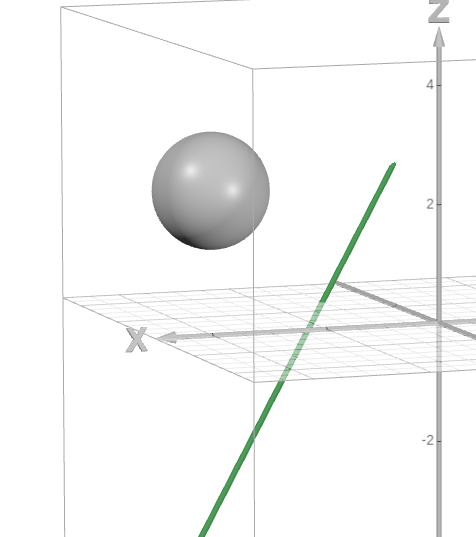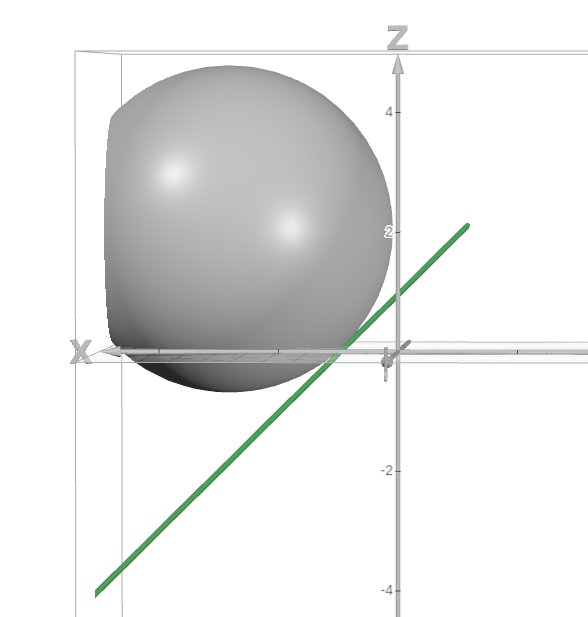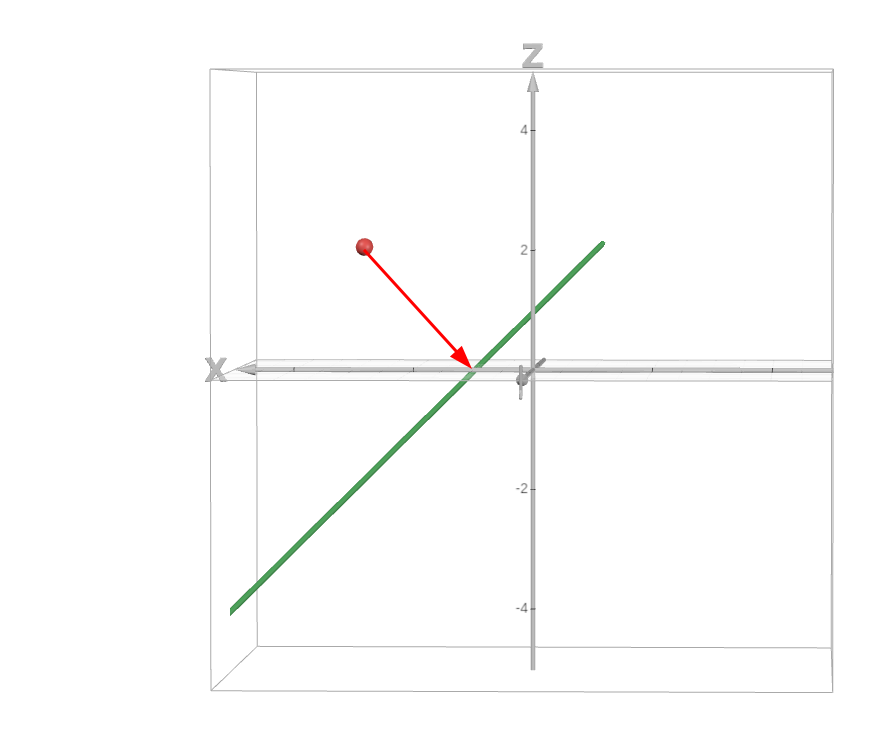So we are given a line, and we are told the centre of a sphere. We are asked to find the radius of the sphere where:
An example diagram is below.

Notice that when the sphere touches the line once, the line is tangential, and thus the radius is at $90°$ to the line.

But additionally, consider just the centre of the sphere in relation to the line.

This looks awfully similar to finding the minimum distance between a point and a line.
That's because it is!
Likewise how we may initially approach this by using the fact that the radius is perpendicular to the line, we use similar reasoning when finding the minimum distance between a point and a line.
Hence, given the following information:
$$\begin{align} L_{1}: & \ r= \begin{pmatrix}x_{1} \\ y_{1} \\ z_{1} \end{pmatrix} + \lambda\begin{pmatrix}x_{2} \\ y_{2} \\ z_{2} \end{pmatrix} \\ S_{1}: & \ \mid r-\begin{pmatrix}x_{3} \\ y_{3} \\ z_{3} \end{pmatrix} \mid = \alpha \end{align} $$Then we can do the following:
This will give some value for $\lambda$.
This is the minimum distance between the centre of the sphere and the line, hence this represents the value of $\alpha$ that satisfies point 21.
From intuitive reasoning, it should be evident that point 12 is for values of $\alpha$ where $\alpha>\mid \vec{d}\mid$.
Likewise, point 33 is for values of $\alpha$ where $0<\alpha<\mid \vec{d}\mid$4
Enjoy this newfound knowledge!